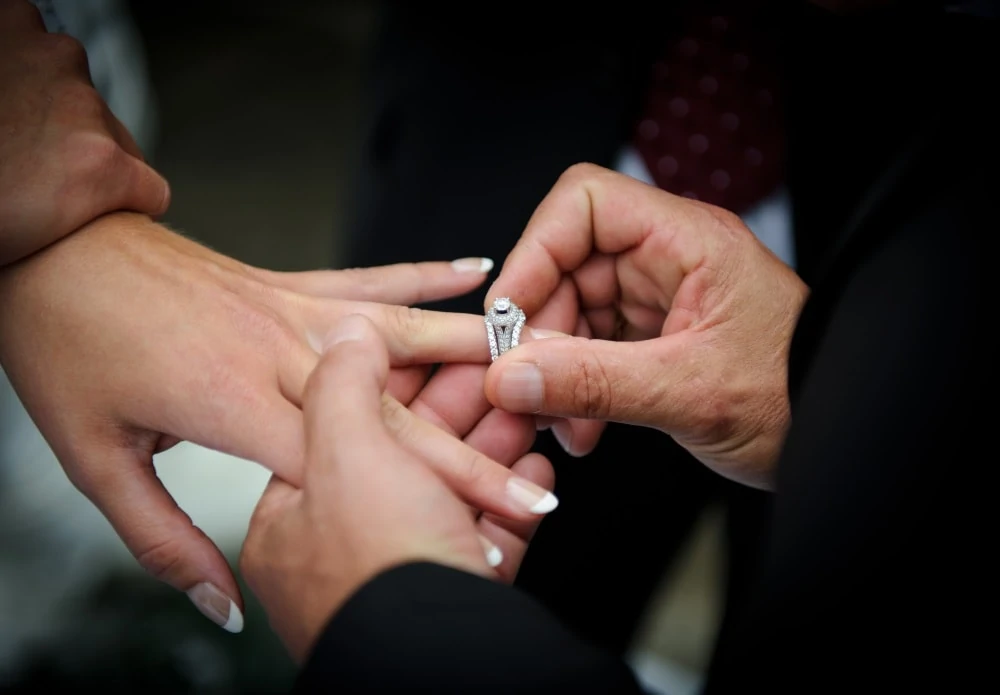
Table of Contents
As Jewelry Shopping Guide editors, we write about things that we love and we think you’ll like too. We often have affiliate partnerships, and may generate some revenue from these links at no cost to you.
Ring guards are known by many names, including ring enhancers, ring wraps, and curved rings. They’re ideal to add some detail and sparkle to a solitaire ring while also keeping it firmly in place.
Here’s a look at what ring guards are and whether you need one.
What is a Ring Guard?
As the name suggests, a ring guard offers a certain amount of protection to a solitaire ring by acting as a buffer or a guard around it. However, they do much more than just that.
Put simply, a ring guard is a creative ring designed to be worn together with a solitaire ring. The idea is that it will enhance the solitaire ring with its additional style and gemstones, giving sparkle and detail to the solitaire ring design.
When worn side by side, the two rings appear to be part of the same design, creating a cohesive look.
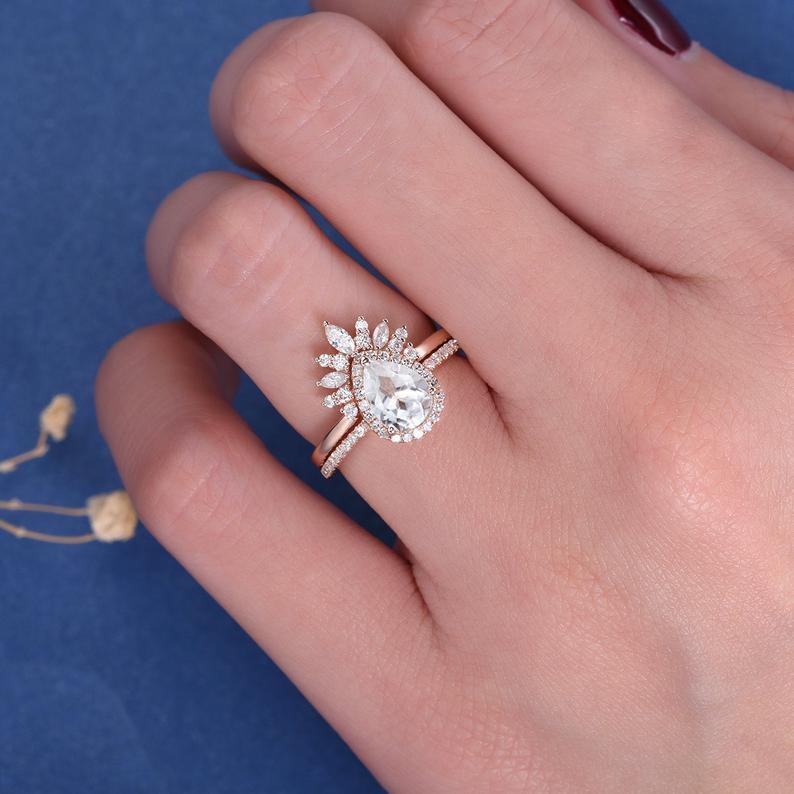
The image above features a pear-shaped solitaire engagement ring with a ring guard that curves around the pointed corner of the pear diamond. This protects the pear diamond and keeps the point safe from impact while the beautiful cluster of stones in the guard enhances the beauty of the moissanite center stone. The result is two rings that look like one design.
Why Wear a Ring Guard?
We’ve already touched on this but let’s have a quick recap.
Ring guards can be worn on either side of the solitaire ring or on just one side, which protects the ring from impact and unnecessary exposure. This is an excellent option if you have a very big diamond and don’t want to damage it with a hard knock.
Another thing a ring guard does is to keep the solitaire ring in place, reducing its tendency to spin around on your finger or to droop forward. This makes it more comfortable to wear while also keeping the ring upright and facing forward.
Ring guards are also chosen as wedding bands today, and with the trend of stacked wedding bands taking off, this becomes an excellent way to add more bands to your ring finger while still keeping the designs looking cohesive.
And finally, ring guards complement the solitaire ring, making it appear more beautiful and elaborate than it really is. It’s perfect for jazzing up a plain solitaire band and giving it some flair.
Types of Ring Guards
While there are many individual designs, all ring guards tend to fall into one of the following two categories:
1. Ring wrap style
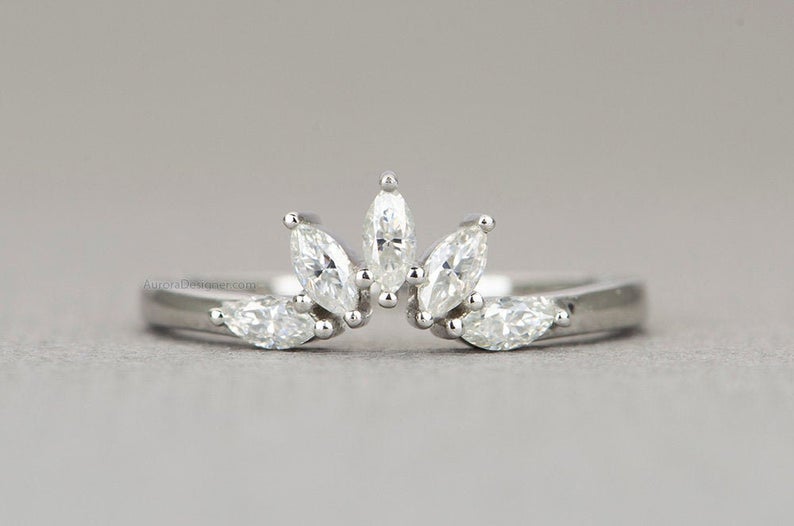
This refers to a single band that curves around the solitaire ring. It can be used as a wedding band but are also perfect to commemorate other special occasions like anniversaries or vow renewals. You could choose two separate curved bands for the top and bottom which gives you more flexibility than an insert ring.
2. Insert rings
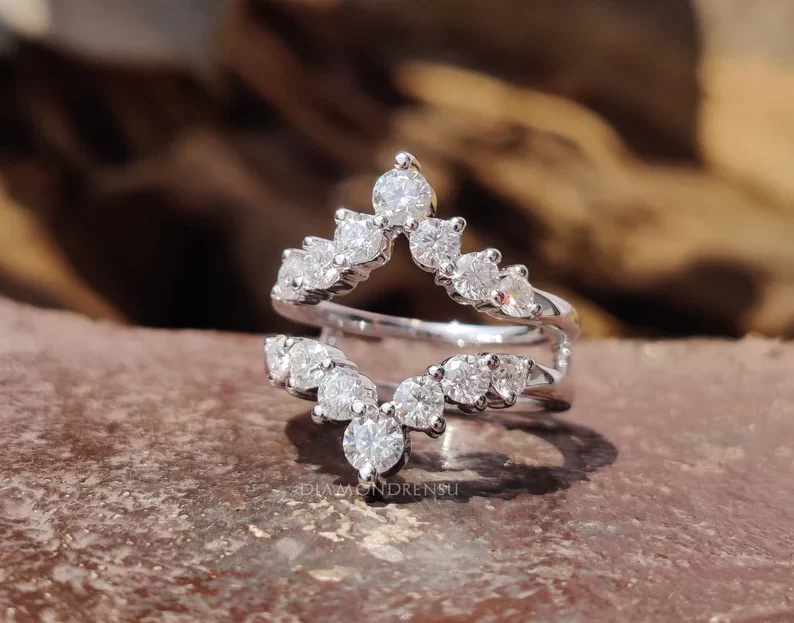
This is typically two connected rings with a gap for the solitaire ring to fit in between. This style typically has accent gemstones in pave or channel settings. They protect the solitaire from both sides and create an overall symmetrical design.
Ring Guard Styles and Designs
Ring guards come in a range of styles and designs. Here are the most popular ones:
1. Channel Set Ring Guard
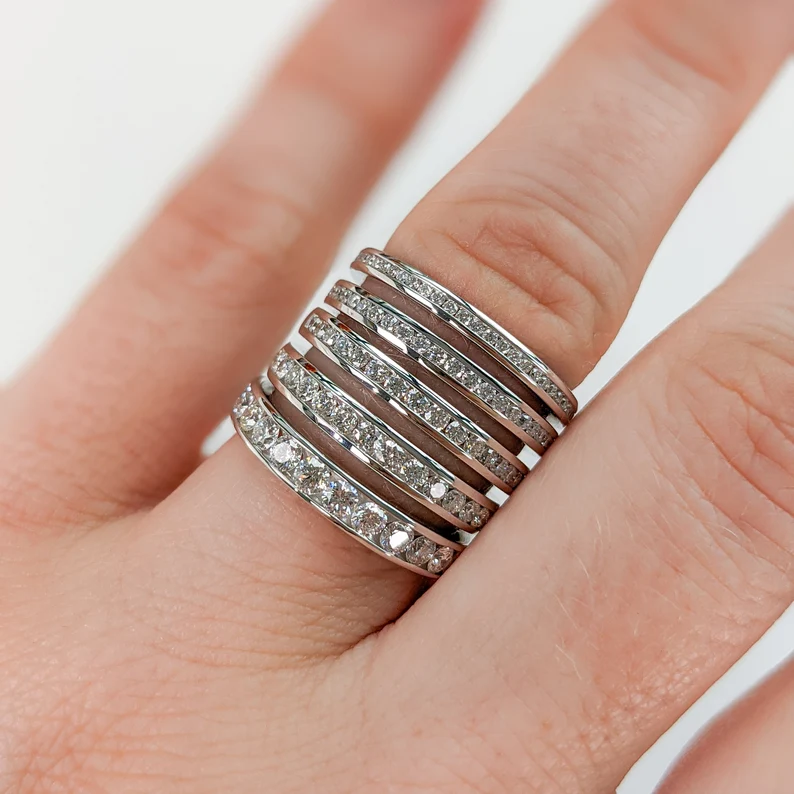
This style features a row of diamonds or other gemstones set into a channel or groove in the metal band. The result is a sparkling band with diamonds held securely in place. Channel settings tend to highlight the metal as much as the stones and perfectly highlight a center stone without outshining it.
2. Ring Guard with Colored Gemstones
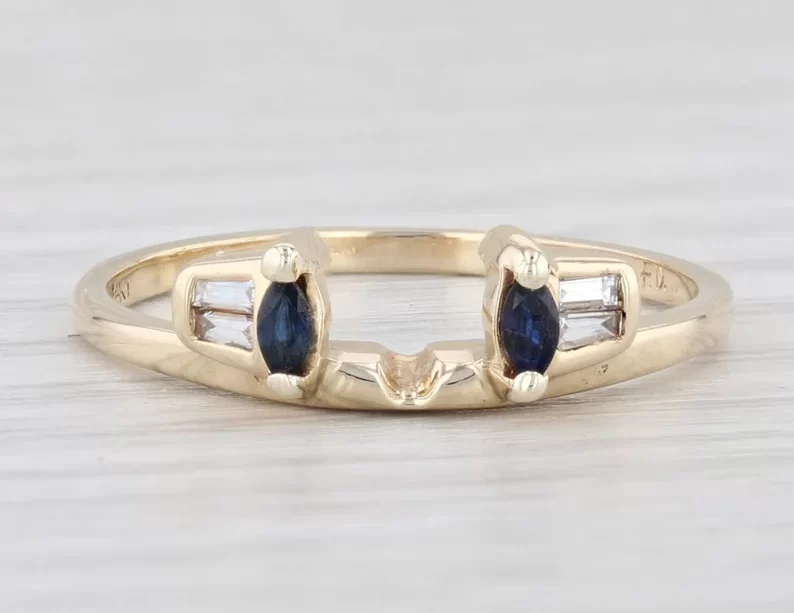
Instead of going with diamonds for your ring guard, colored gemstones like sapphires, rubies, or emeralds add color and unique luster and textures to your ring design. This can perfectly match either diamond or gemstone center stone.
3. Pave Set Ring Guards
Like channel settings, pave set ring guards like this one made of lab diamonds also feature a set of tiny diamonds around the band’s circumference but instead of being set in a channel, these diamonds ‘pave’ the surface of the metal. Pave ring guards add exceptional sparkle to the design and are a favorite for wedding ring guards.
How to Choose a Ring Guard
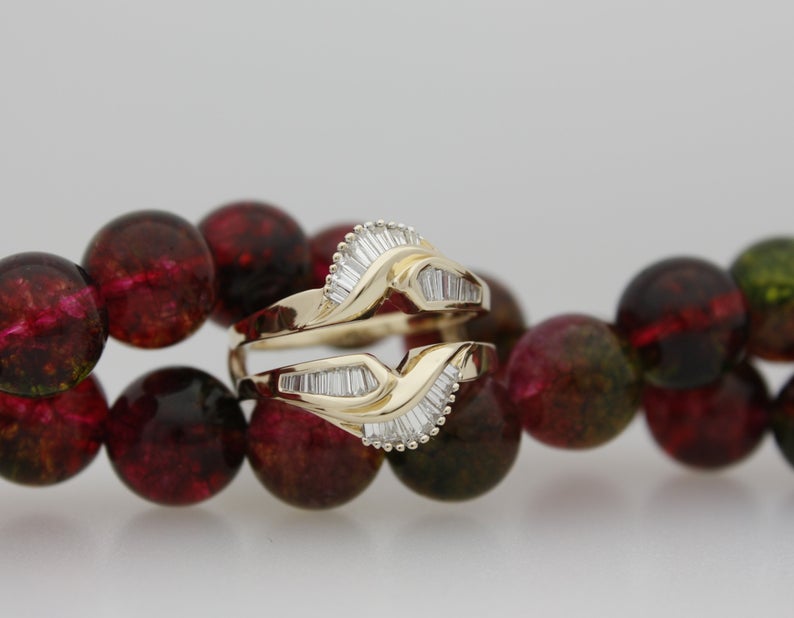
When choosing a ring guard, consider the following factors:
1. Consider the metal
While mixing metal tones is in vogue and can result in a modern eclectic style, choosing the same metal hues will ensure that the bands complement each other. Whichever style you choose, the point to ensure is that the bands don’t clash and look too mismatched.
2. Size of the ring guard
Ring guards can be notoriously difficult to resize, because of their more complicated design. This is especially true of ring inserts. Ensure you get the correct finger size on the first go or check with the jeweler about resizing options before you order.
3. Design
Always check the center stone and either buy or commission a ring guard that will fit your solitaire ring. If your center stone is a marquise cut, ensure that the extra length is accommodated in the ring guard. Also, if the ring guard has prominent gemstones or diamonds, ensure that the faceting on these stones doesn’t clash too much with the center stone’s faceting structure. For example, a brilliant round-cut center stone flanked by step-cut emerald stones may create a confusing look.
4. Type
Decide on whether you want your ring guard to be a wrap or insert style. In general, insert ring guards tend to hold the solitaire firmly in place while wraps can still allow some movement.
Where to Buy Ring Guards
Ring guards aren’t typically found in jewelry stores meaning that your best option is to either have one commissioned by a jeweler that specializes in bespoke services or to find an artisan jeweler who’ll do the job for you.
We recommend starting your search on Etsy, which has a wide range of ring guards on offer. Once you choose a retailer you can then talk about customizing the ring guard to suit your solitaire ring.









